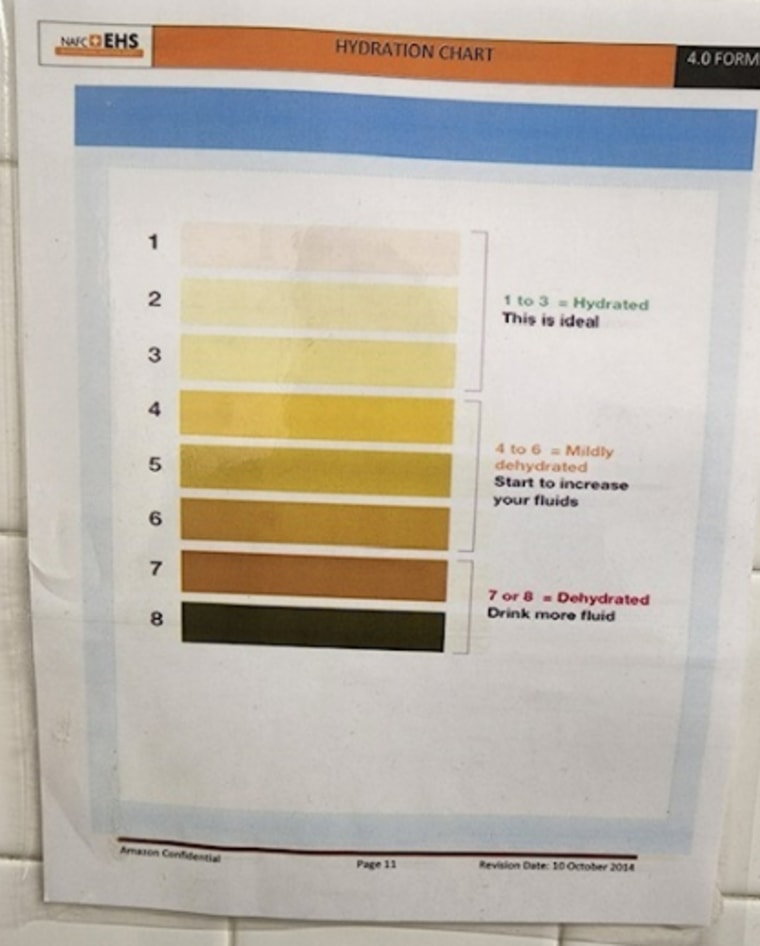“I’m always worried the heat will kill me.”
Those were the words of Fernando Castillo, a UPS driver after he passed out from heat exposure in a veterinarian’s office where he had taken refuge from the roasting temperatures in this delivery truck.
E&E News analyzed OSHA data from 2015 to 2021 and found that parcel delivery and mail services had the second-highest rates of workers falling ill due to heat illness. Only the construction industry had more incidents reported to OSHA.
As heat waves overtook the nation this July, headlines rolled in about drivers of un-air-conditioned delivery vehicles working in sweltering temperatures falling gravely ill or even dying on their routes.
Take the case of a UPS driver in Scottsdale, Ariz., who was seen on a doorbell camera collapsing while delivering a package in 113-degree heat. Video shows the uniformed driver stumbling up to the front stoop before keeling over. After lying on the ground for a few minutes, the delivery man stood up, rang the doorbell and made his way back to his truck.
In California, UPS driver Esteban Chavez Jr. died of suspected heatstroke just days shy of his 24th birthday. His family told local news outlets that Chavez was found collapsed in the front seat of his vehicle by the Pasadena, Calif., homeowner to whom he had just delivered a package.
Chavez’s death has garnered the attention of lawmakers working to pass legislation in Congress to require OSHA to establish regulations protecting workers from heat within two years.
It’s not just UPS. OSHA data reviewed by E&E News shows that the vast majority of mail carriers stricken with heat illness work for UPS or the U.S. Postal Service — two mail services whose workers largely drive trucks that are not air conditioned.
Between 2015 and 2021, the Postal Service reported more than 150 heat-related incidents to OSHA, and UPS reported 117.
Heat is a deadly hazard. The Bureau of Labor Statistics data shows that heat exposure kills an average of 40 workers annually. There were 56 fatalities in 2020. But most heat-related injuries and deaths are never reported, so those figures likely significantly underestimate the true toll.
Heat may be deadly, but preventing heat-related injuries and deaths is not complicated: Water, rest and shade — and, of course, air conditioning in vehicles.
Heat may be deadly, but preventing heat-related injuries and deaths is not complicated: Water, rest and shade — and, of course, air conditioning in vehicles. E&E notes that “FedEx, whose trucks are air conditioned, only reported seven cases of heat illness during the same time frame.” UPS defends its failure to provide air conditioning, arguing that it would be “ineffective” because “UPS delivery vehicles “make frequent stops, which requires the engine to be turned off and the doors to be opened and closed, about 130 times a day on average.” (For some reasons that same problem doesn’t affect FedEx.)
But not to worry. UPS is “distributing 260,000 new uniforms with “wicking dry-fit shirts,” “making more than 125,000 cooling towels available.” And fans (which do no good when the air temperature is higher than the body’s temperature.)
Employers Oppose Protecting Workers From Heat

OSHA is working on a heat standard, but is facing fierce resistance from the agriculture, construction and other industries. Although California, Oregon, Minnesota and Washington have heat standards, business interests in Nevada, Florida, Virginia and other states have succeeded in fending off protective heat standards that require water, shade and rest because “If we give them breaks, it costs us money.”
After a Rafael Reynaldo Mota Frias died at an Amazon warehouse in New Jersey during a heat wave last month, Amazon claimed that the death was due to a “personal medical condition.” Nevertheless Amazon is upgrading the air conditioning system at the warehouse. “Employees also said more fans had been installed around the warehouse in recent weeks. The area where Frias was working when he collapsed was known to be especially hot and with little air circulation, according to seven workers at the site.”
“If we give them breaks, it costs us money.”
In addition to the new air conditioning system, Amazon is reportedly handing out more water and snacks and encouraging workers to take breaks. And Amazon is also posting charts showing dehydration risks indicated by urine color in some of the facility’s bathrooms.
OSHA is investigating Frias’s death as well as another inquiry into two additional deaths of people employed at a separate Amazon facility in New Jersey. One of those was the result of a fall from a ladder.
Meanwhile, in New Jersey, Eileen Kean, New Jersey director for the National Federation of Independent Business stresses that added rules and potential new fees could be onerous for businesses. Tony Russo, president of the Commerce and Industry Association of New Jersey, “Their employees are their resources, so it would make sense that businesses are very responsible with the dangers of heat.”
But Carmen Martino, a labor professor at Rutgers University and co-director of its Occupational Training and Education Consortium, notes that many
“employers do whatever they can do keep their ‘OSHA reportables’ down,’” meaning the true scope of overheating on the job may not be fully known.
“They do this by encouraging/discouraging workers to not report accidents, injuries or when they might not be feeling well due to extreme temperatures,” he said. “They offer incentive programs for the department with the fewest “reportables” or they give parties or other forms of encouragement that puts pressure on workers not to report injuries, exposures.”
OSHA Cites Employer for Worker Death on 2nd Day on the Job
OSHA, meanwhile, is not standing still, even without an enforceable standard in the near future. OSHA has been citing some employers using the General Duty Clause, which requires employers to provide a safe workplace, even where there is no OSHA standard. OSHA has issued seven citations for heat-related issues at UPS since 2011, according to E&E, and an additional eight hazard alert letters to the company. OSHA sends hazard alert letters when there is not enough evidence to cite under the General Duty Clause.
Earlier this month, OSHA cited Citrus Harvesting Inc after 35-year-old strawberry harvesting farmworker died from heat illness on a Duette, Florida farm on April 5, 2022. It was only his second day on the job. The company is facing $29,004 in proposed penalties. OSHA cited the company for exposing workers to high heat hazards while harvesting strawberries for 8-hours and pulling plastic from the plant beds. OSHA also cited the company for failure “to ensure that a person adequately trained to provide first aid to employees working in an area where there was no infirmary, clinic, or hospital was available in case of severe injury or illness such as heat related emergencies.
Last year, OSHA cited Buldo Container and Disposal Services in Washington Township, New Jersey after a trash pickup worker died of heat stroke on his first day on the job.
But OSHA General Duty Clause citations are rare because they’re resource intensive for the tiny, underfunded agency, and legally burdensome.
Congressional Action
The House of Representatives marked up legislation (H.R. 2193) intruded by Rep Judy Chu (D-CA) last month that would require OSHA to issue a heat standard within 42 months and a vote is likely on the floor before the end of the year. Although similar legislation has been introduced into the Senate by Ohio Senator Sherrod Brown, it is unlikely to pass the closely divided Senate.
But remember, there are closely fought Senate, House and Gubernatorial elections coming this November, especially in “hot” states like Arizona, North Carolina, Texas, Florida and Georgia. But as climate change intensifies, workers are vulnerable to heat in any state — not just those in the South. Get out there and ask candidates what they plan to do to protect workers from heat.
